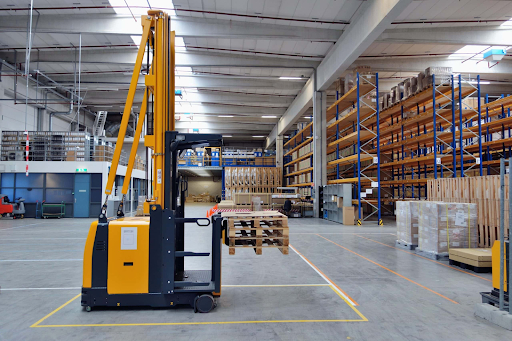Introduction
In the fast-paced world of logistics, efficiency reigns supreme. As businesses strive to meet the ever-increasing demands of consumers, the last mile of delivery has emerged as a critical battleground. Within this landscape, the concept of cross-dock operations has gained significant traction, offering a strategic solution to streamline logistics processes. In this article, we delve into the essence of crossdock meaning, its role in last-mile logistics, and why businesses are increasingly turning to logistics technology to optimize these operations.
Understanding Crossdock Meaning
At its core, cross-docking is a logistics strategy designed to minimize handling and storage costs by expediting the flow of goods from inbound transportation to outbound transportation, with little to no storage in between. Unlike traditional warehousing models where goods are stored for extended periods, cross-dock facilities act as transient hubs where products are sorted, consolidated, and immediately dispatched to their final destinations. This swift transfer eliminates the need for inventory storage, resulting in reduced inventory holding costs and faster delivery times.
The Mechanics of Crossdock Operations
Crossdock operations typically involve three main stages: inbound, staging, and outbound. During the inbound stage, shipments from various suppliers are received at the cross-dock facility. These shipments are quickly sorted based on their final destinations and consolidated as needed. In the staging area, products are temporarily held before being loaded onto outbound transportation vehicles, such as trucks or vans. Finally, during the outbound stage, the sorted and staged shipments are loaded onto delivery vehicles and dispatched to customers, distribution centers, or retail stores.
The Role of Crossdock in Last Mile Logistics
In the realm of last-mile logistics, where speed and efficiency are paramount, cross-dock operations play a crucial role in optimizing delivery processes. By bypassing traditional warehousing practices that involve storing inventory for extended periods, cross-docking enables businesses to expedite the movement of goods from distribution centers to end customers. This is particularly beneficial in urban areas where real estate costs are high, and space constraints make traditional warehousing impractical. Moreover, by consolidating shipments and minimizing handling, cross-docking helps reduce the risk of order errors and delays, ensuring timely deliveries and enhanced customer satisfaction.
The Need for Logistics Technology
In today’s digitally-driven world, businesses are increasingly leveraging logistics technology to streamline operations and gain a competitive edge. From advanced warehouse management systems (WMS) to route optimization software, technological innovations are revolutionizing the way logistics companies manage their supply chains. In the context of last-mile logistics and cross-dock operations, technology plays a pivotal role in enhancing efficiency, visibility, and accuracy throughout the delivery process.
One of the key technologies transforming cross-dock operations is real-time tracking and visibility solutions. By providing real-time insights into the movement of goods within the supply chain, these solutions enable businesses to monitor inventory levels, track shipments, and proactively address any issues that may arise during transit. This level of visibility not only improves operational efficiency but also enhances customer satisfaction by providing accurate delivery updates and ETAs.
Furthermore, automation technologies such as robotics and artificial intelligence (AI) are revolutionizing the way cross-dock facilities operate. Automated sorting systems, for example, can significantly reduce manual labor requirements while increasing sorting accuracy and throughput. Similarly, AI-powered predictive analytics can help optimize routing and scheduling decisions, ensuring that deliveries are made in the most efficient manner possible.
The Future of Crossdock Operations
As consumer expectations continue to evolve and e-commerce sales skyrocket, the importance of efficient last-mile logistics and cross-dock operations will only intensify. To remain competitive in this dynamic landscape, businesses must embrace logistics technology and leverage it to optimize their supply chain processes. By adopting a strategic approach to cross-docking and investing in the right technological solutions, companies can streamline their operations, reduce costs, and deliver exceptional customer experiences in the final mile of delivery.
The evolving landscape of logistics demands a proactive approach from businesses. With consumer expectations on the rise and e-commerce continuing to reshape the market, the importance of efficient last-mile logistics and cross-dock operations cannot be overstated. In this context, the future of cross-dock operations holds immense potential for innovation and transformation.
Looking ahead, the continued integration of logistics technology will be paramount. Businesses must stay abreast of advancements in real-time tracking, automation, and AI-driven analytics to remain competitive. Embracing these technologies enables companies to optimize their cross-dock operations, enhance efficiency, and deliver superior customer experiences.
Real-time tracking and visibility solutions will continue to play a pivotal role in providing businesses with actionable insights into their supply chains. By monitoring inventory levels, tracking shipments, and proactively addressing any issues that arise, businesses can ensure seamless delivery processes and bolster customer satisfaction.
Automation technologies, including robotics and AI, will further revolutionize cross-dock operations. Automated sorting systems enhance efficiency by reducing manual labor requirements and increasing sorting accuracy. AI-powered predictive analytics optimize routing and scheduling decisions, ensuring deliveries are made in the most efficient manner possible.
As businesses navigate the complexities of last-mile logistics, strategic investment in logistics technology will be key. Advanced warehouse management systems and route optimization software empower businesses to streamline operations, minimize costs, and maximize productivity. By harnessing the power of technology, companies can adapt to evolving consumer demands and maintain a competitive edge in the market.
In conclusion, cross-dock operations represent a critical component of modern logistics, particularly in the context of last-mile delivery. By expediting the flow of goods and minimizing handling costs, cross-docking enables businesses to meet the ever-increasing demands of consumers in an efficient and cost-effective manner. As the logistics industry continues to evolve, embracing logistics technology will be essential for optimizing cross-dock operations and delivering exceptional customer experiences in the final mile of delivery. Through strategic investment in technology and a commitment to innovation, businesses can navigate the challenges of last-mile logistics with confidence and emerge as leaders in the dynamic world of e-commerce.




